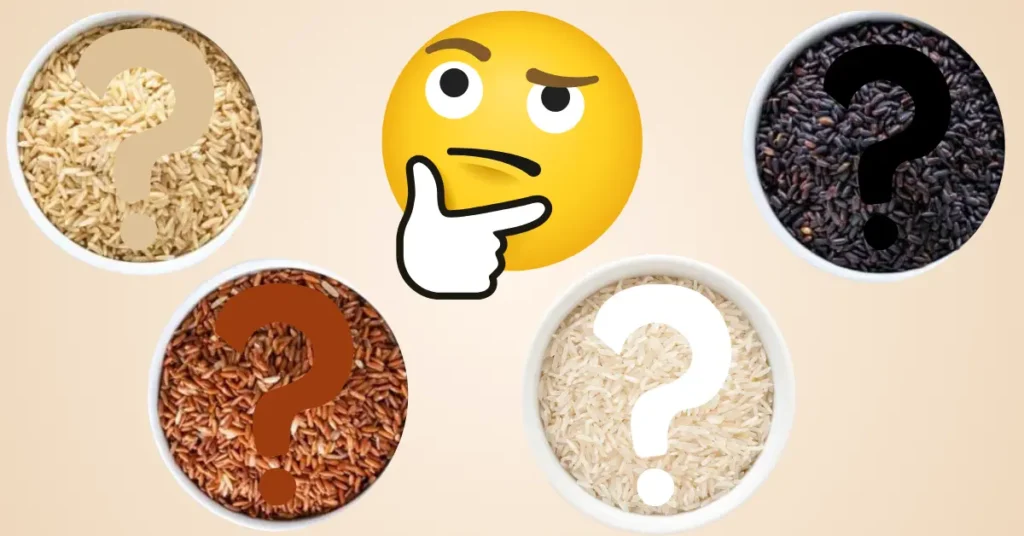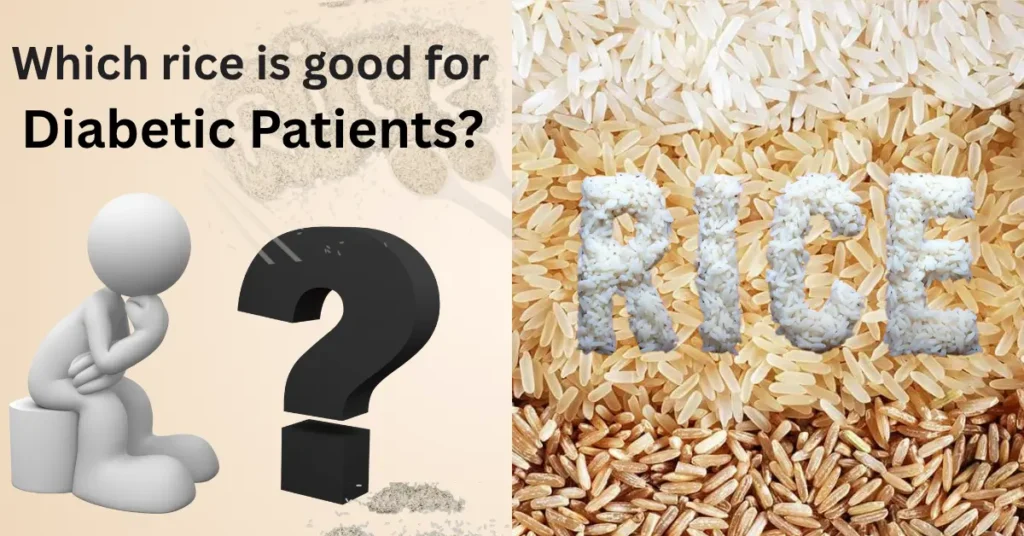When I first heard that rice could play tricks with blood sugar, I was really shocked. Rice was a constant on my family’s table when I was growing up—warm, comforting stuff, something you never questioned. But with diabetes in the mix, even that humble comfort food had to be questioned.
Which rice is good for diabetic patients? It’s not a matter of giving it up, but more of selecting better. The kind of rice you consume can really make a difference—not only in the feeling of fullness, but also in how your body reacts later. Some are refined and get digested too quickly, while others linger, providing smooth energy and preventing sugar spikes.
If you’re attempting to maintain your sugar levels while not sacrificing the food that you enjoy, this guide may be able to change the way you look at rice.
Diabetic-Friendly Rice Varieties- You Can Trust!
If you believe diabetes equals goodbye to rice, think twice. Certain varieties of rice are easier on blood sugar than others. The secret is figuring out which ones do your body good, not harm. Fiber, texture, and how the rice is processed all come into play.
Break it down with me—here are the rice varieties that are not only safe, but smart options for diabetics.
1. Brown Rice – The Intelligent Diabetic’s Friend
Brown rice is generally the diabetic’s preference, and it’s understandable why. Brown rice is processed less than white rice. Brown rice retains its bran and germ layers, which are full of fiber, vitamins, and minerals. This fiber slows down the rate at which your body can absorb the rice, causing your blood sugar level to rise gradually rather than quickly. It’s often considered the best rice for diabetics due to its high fiber and lower glycemic impact.
One of the benefits of brown rice is that it makes you feel full for a longer period of time and therefore you don’t end up overeating. Brown rice, as per Ayurveda, is light and easy to digest and balances kapha dosha, which is associated with weight gain and slow metabolism.
2. White Rice – Familiar but Dangerous
White rice is distributed to all households as a staple, but it is unsuitable for diabetics. It is processed and polished, and therefore it loses all its natural fiber and nutrients. Because of this, white rice is digested very quickly and leads to an instantaneous rise in blood sugar levels.
However, if you’re looking for the best rice for diabetics, white rice usually doesn’t make the cut. If you simply can’t do without it, you can still include it in your diet—but only in moderation. Have it with vegetables, lentils, or any high-fiber food to delay its effect on your blood sugar.
3. Basmati Rice – A Balanced Middle Ground
Basmati rice is famous for its long grain and fragrant smell, and it is more suitable for diabetics than white rice. It has a lower glycemic index, and hence it will not increase your blood sugar as quickly.
When cooked properly (light and fluffy, not sticky), basmati rice is a healthy component of a well-rounded diabetic diet. If you’re willing to go the extra step, use brown basmati rice. It has the added fiber advantage and the comforting flavor and texture you love.
4. Red Rice – Bursting with Flavor and Fiber
Red rice is an ideal choice for those who wish to manage their diabetes through better dietary habits. It appears stunning reddish due to natural compounds called anthocyanins, which are powerful antioxidants. These help decrease body inflammation as well as support overall health.
In addition to antioxidants, red rice is also rich in zinc, iron, and fiber. The fiber delays the rate of sugar absorption in your body, so you will not experience the immediate sugar rush after eating it. The fiber also has a mild earthy taste, which gives your food depth and richness.
5. Black Rice – The Hidden Superfood
Black rice, or “forbidden rice,” is not as common in the kitchen, but it’s full of health advantages—especially for diabetics. It contains the lowest glycemic index of all rice, which helps level out your blood sugar level. This rice is packed with antioxidants, namely anthocyanins, which produce its dark color and gastronomical health benefits. It is also extremely rich in fiber content, making it an excellent option for digestion and long-lasting satiety. Although it may be somewhat harder to find, black rice is well worth adding to your diet when available.

“Spoiler alert: Ayurveda isn’t just about sipping hot water and chanting mantras. It’s got legit solutions for sugar spikes too. From magical herbs to mindful eating rituals, we’ve got the juicy stuff. Click here to feel ancient and wise.”
| Rice Type | Glycemic Index | Fiber Content | Suitability for Diabetics |
|---|---|---|---|
| Brown Rice | 50–55 | High | ✅ Excellent |
| White Rice | 70–80 | Low | ❌ Not recommended |
| Basmati Rice | 50–58 | Moderate | ⚠️ Good in moderation |
| Red Rice | 55–65 | High | ✅ Good option |
| Black Rice | 42 | High | ✅ Excellent |
Can Diabetics Eat Rice? Yes—If You Follow These Proven Strategies
If you have diabetes, you don’t need to stop eating rice completely — you just need to be clever about it. Lots of people ask me about which rice is good for diabetic patients? but it’s not only about the type of rice. It’s also the method you are using to prepare your food and what you are eating your rice with. Here’s a simple trick: before you eat rice, let something high in fiber take priority in your meal. Start with a bowl of salad, a little dal or some sabzi. When you start with high fiber foods, it will slow down your digestion of the carbohydrates, so your blood sugar doesnot elevate too quickly. Another smart idea? Cook your rice, let it cool down and then heat it again when you’re ready to eat. It sounds strange but this method changes some of the starch into resistant starch, which functions in a similar ways fiber; helping your sugar levels. And don’t eat quickly. Eating slowly allows your body to properly process glucose much better. So, when you think about what rice is good for diabetic patients, just remember, it’s not only about the rice. It’s also about how you consume it. When you are mindful and have the right habits and beliefs.
Which Rice Is Best for Diabetics?
If you have diabetes, you don’t have to eliminate rice from your diet altogether—you just need to get wise about it. Brown rice is usually the best bet because it’s high in fiber and takes a long time to digest, keeping your blood sugar levels even. But there’s more to the tale.
Hand pounded rice, an ancient traditional type, is a gem forgotten—less processed, more nutrient-rich, and easier on blood sugars. Even pre-soaking rice for cooking for 30–45 minutes can lower its starch and make it more gut friendly.
The best rice for you isn’t just on paper—it’s how your body reacts. Pay attention to how you feel after consuming various types, and select what works best for your body.
With a little bit of awareness and some minor adjustments, rice can still feature in your life—guilt-free.
Conclusion
Diabetes doesn’t have to mean goodbye to rice, just goodbye to the plain kind. It means being more careful about the way you eat rice and the kind of rice you eat. From picking wiser choices such as brown, red, or black rice to eating sabzi or dal alongside your meal—each little thing matters. Even reheating and cooling rice or slow chewing can turn the tables in your favor.
The best part? You get to still experience the comfort and warmth of rice, without the terror of sugar spikes. It’s not restriction—it’s about balance, knowing, and making choices that love your body back.
So yeah, rice can remain on your plate—just in a manner that serves your health and brings joy to your meals.




